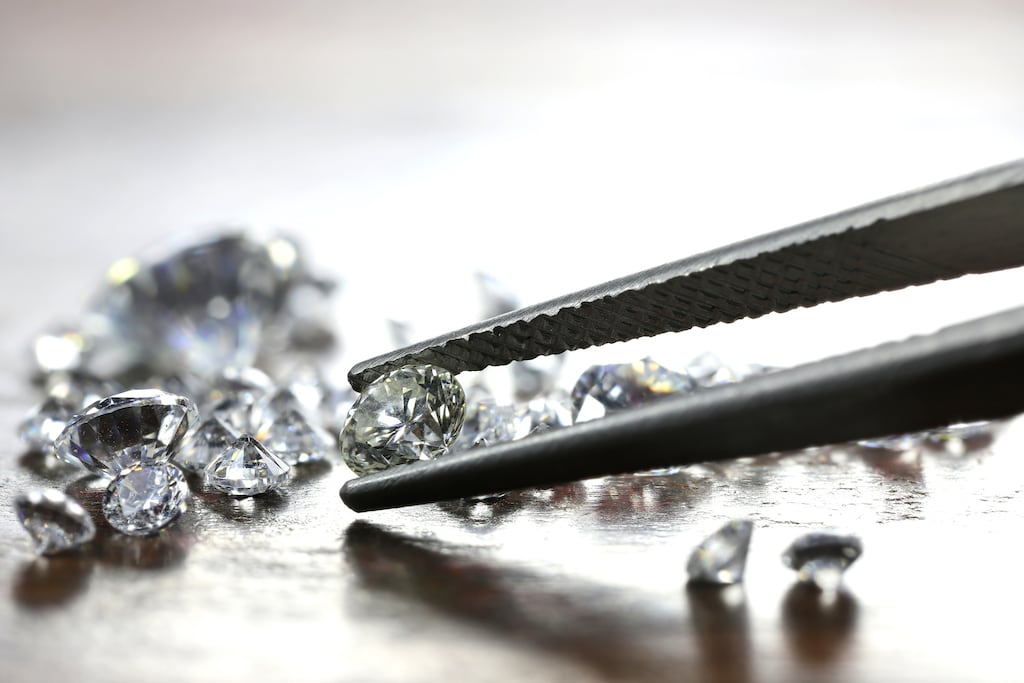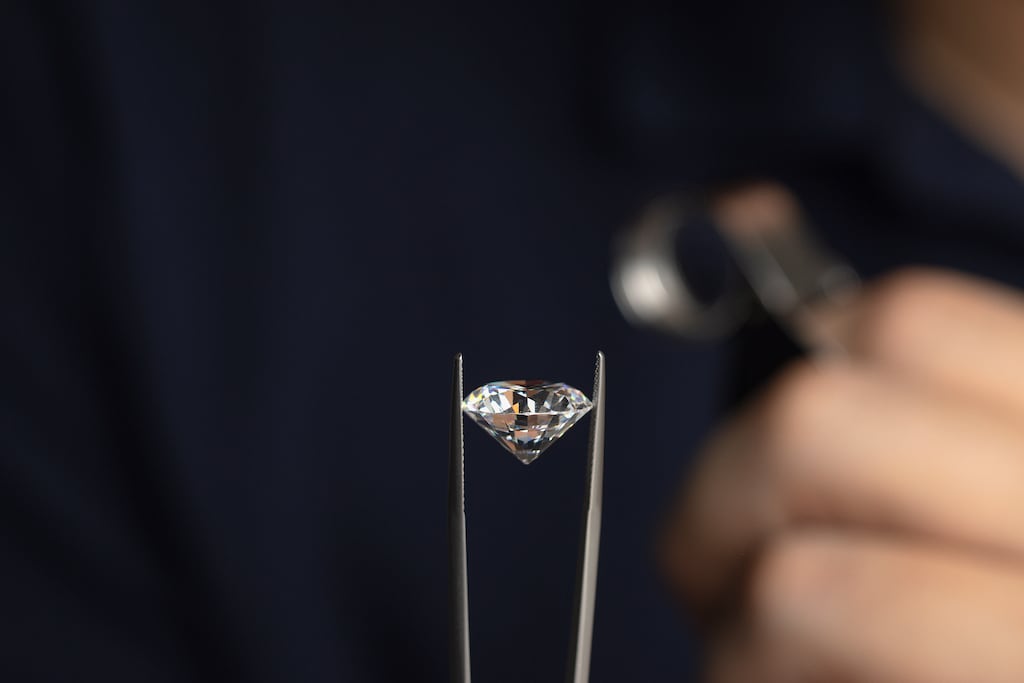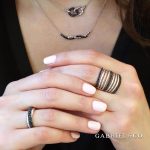Are you intrigued by the allure of lab grown diamonds? If so, you’re not alone. These stunning gems, also known as engineered or cultured diamonds, have been steadily gaining popularity in recent years. They’ve captured the attention of consumers and jewelers alike, not just for their dazzling beauty but also for their affordability, sustainability, and ethical production methods. In this comprehensive guide, we’ll delve into everything you need to know about lab grown diamonds, from their creation process to their care and maintenance.
Lab grown diamonds are a marvel of modern science. They are created in high-tech laboratories using advanced processes that replicate the conditions under which diamonds naturally form in the Earth’s mantle. The result is a gemstone that is physically, chemically, and optically identical to mined diamonds. They share the same hardness, brilliance, and fire that make diamonds the most coveted of all gemstones. Yet, they come without the ethical and environmental concerns associated with mined diamonds.
One of the most appealing aspects of them is their affordability. Because they are created in a lab, they bypass the extensive mining, cutting, and transportation processes associated with natural diamonds. This results in significant cost savings, which are passed on to the consumer. This means you can get a larger or higher quality diamond for the same price as a smaller or lower quality natural diamond.
But the benefits extend beyond their beauty and affordability. They are also a more ethical and sustainable choice. The diamond mining industry has been associated with numerous ethical issues, including child labor, forced labor, and even funding of civil wars. By choosing lab grown diamonds, you are choosing a product that is free from these ethical concerns. Furthermore, the process of creating these diamonds has a much lower environmental impact than mining natural diamonds, making them a more sustainable choice.
In this guide, we’ll explore the science, discussing the high-tech processes used to create them. We’ll delve into the benefits, discussing their ethical, economic, and environmental advantages. We’ll also provide a comprehensive guide on how to care for your diamonds to ensure they continue to sparkle and shine for years to come.
Whether you’re a jewelry lover, an environmental advocate, or simply someone who appreciates the marvels of modern science, lab grown diamonds offer something for everyone. They represent a new era in the world of gemstones, one that combines the timeless beauty of diamonds with the principles of social responsibility and environmental sustainability. So, let’s embark on this journey of discovery!

Photo By Bjoern Wylezich at Shutterstock
The Science Behind Lab Grown Diamonds: A Detailed Exploration
The creation of lab grown diamonds is a testament to human ingenuity and the power of modern science. These diamonds, also known as engineered or cultured diamonds, are created in a laboratory using high-tech processes that replicate the conditions under which diamonds naturally develop. These processes, namely High Pressure High Temperature (HPHT) and Chemical Vapor Deposition (CVD), are fascinating in their complexity and precision. Let’s delve deeper into each of these processes and the science behind them.
High Pressure High Temperature (HPHT)
HPHT is one of the earliest methods used to create these diamonds. This method seeks to mimic the natural geological conditions deep in the Earth that cause a diamond to form. Here’s a step-by-step breakdown of the HPHT process:
- Preparation: The process begins with a small piece of diamond known as a ‘seed’. Along with a carbon source (usually graphite), the seed is placed in the core of the HPHT machine, known as the ‘growth cell’.
- Creating the Right Conditions: The growth cell is subjected to extreme temperatures of about 1400 to 1600 degrees Celsius and pressures of about 5 to 6 GigaPascals. These conditions mimic those found about 150 kilometers below the Earth’s surface, where natural diamonds form.
- Diamond Formation: Under these extreme conditions, the carbon source melts and starts to form a diamond structure around the seed. This happens because the high pressure forces the carbon atoms to arrange in a diamond crystal structure, which is a more stable form under these conditions.
- Cooling and Extraction: After several days to weeks, the growth cell is allowed to cool, causing the melted carbon to solidify into a larger diamond. The newly formed diamond is then extracted, cut, and polished, ready to be set into a piece of jewelry.
Chemical Vapor Deposition (CVD)
CVD is a newer method that offers more control over the diamond’s properties. Here’s how the CVD process works:
- Preparation: Like the HPHT process, CVD also starts with a diamond seed. However, instead of being placed in a high-pressure chamber, the seed is placed in a vacuum chamber filled with a carbon-rich gas, such as methane.
- Creating the Right Conditions: The chamber is heated to temperatures of about 800 to 1200 degrees Celsius, much lower than in the HPHT process. The heat causes the gas to break down, releasing carbon atoms.
- Diamond Formation: The released carbon atoms are attracted to the diamond seed and start to deposit onto it, layer by layer. This process is slower than HPHT, often taking several weeks to form a diamond. However, it allows for greater control over the diamond’s properties, such as its color and clarity.
- Extraction and Finishing: Once the diamond has reached the desired size, the chamber is cooled, and the diamond is extracted. It is then cut and polished, ready to be set into a piece of jewelry.
The science behind gorwing diamonds is a fascinating blend of geology, chemistry, and physics. It’s a testament to human ingenuity, showing how we can recreate in a lab what nature takes billions of years to do. Whether created by HPHT or CVD, these diamonds offer a beautiful, ethical, and affordable alternative to mined diamonds. They are a testament to the power of science and a symbol of a more sustainable and conscious future in the world of gemstones.
The Process of Creating Lab Grown Diamonds: A Detailed Look
Creating lab grown diamonds is a fascinating process that combines high-tech science with the beauty of nature’s most precious gemstone. This process, while complex, can be broken down into several key steps. Let’s delve deeper into each of these steps to understand how a small diamond seed transforms into a dazzling, full-grown diamond.
Step 1: Selecting the Diamond Seed
The process begins with the selection of a small diamond seed. This seed serves as the foundation upon which the lab grown diamond is built. The seed is typically a thin slice of a previously grown lab diamond, chosen for its high quality and lack of impurities.
Step 2: Preparing the Growth Chamber
Next, the diamond seed is placed in a growth chamber. This chamber is designed to replicate the conditions found deep within the Earth where natural diamonds form. The chamber is filled with a carbon-rich gas, typically methane, which will provide the carbon atoms needed to form the diamond.
Step 3: Heating the Chamber
Once the diamond seed is in place and the chamber is filled with gas, the chamber is heated to extreme temperatures, often exceeding 2000 degrees Celsius. This heat is similar to that of the Earth’s mantle, the layer of the Earth where natural diamonds form over billions of years.
Step 4: Breaking Down the Gas
The extreme heat within the chamber causes the carbon-rich gas to break down. This process, known as pyrolysis, separates the gas into its individual atoms. The carbon atoms are then free to bond with the diamond seed.
Step 5: Growing the Diamond
Over time, the carbon atoms bond to the diamond seed, building up layer by layer, atom by atom. This process is slow and meticulous, often taking several weeks to complete. However, the patience required is well worth it, as the result is a diamond that is identical to those found in nature.
Step 6: Inspecting the Diamond
Once the diamond has fully grown, it is carefully removed from the chamber and inspected. This inspection ensures that the diamond has grown correctly and that it meets the high standards of quality and purity required.
Step 7: Cutting and Polishing the Diamond
The final step in the process is cutting and polishing the diamond. This is done by skilled artisans who cut the diamond into its desired shape and then polish it to reveal its stunning brilliance and fire.
The process is a marvel of modern science. It combines the beauty and allure of natural diamonds with the precision and control of laboratory conditions. The result is a gemstone that is not only beautiful and durable, but also more ethical and sustainable than its natural counterpart. Whether you’re a jewelry lover, an environmental advocate, or simply someone who appreciates the marvels of modern science, lab grown diamonds offer something for everyone.
Battle of the Diamonds: A Detailed Examination
When it comes to choosing between diamonds grown in the lab and natural diamonds, it’s essential to understand the similarities and differences between the two. Both types of diamonds offer their own unique advantages, and understanding these can help you make an informed decision. Let’s break down the differences between these two.
Physical Properties and Appearance
In terms of physical properties and appearance, lab grown diamonds and natural diamonds are virtually indistinguishable. Both share the same chemical composition – they are made of pure carbon. They also share the same crystal structure, which gives diamonds their unique hardness and brilliance. Here’s a closer look at these shared properties:
- Hardness: Diamonds are renowned for their exceptional hardness. On the Mohs scale of mineral hardness, diamonds score a perfect 10, making them the hardest known material. This hardness is a result of the strong covalent bonds between the carbon atoms in the diamond’s crystal structure. Both lab grown and natural diamonds share this property, making them highly resistant to scratching.
- Brilliance and Fire: Diamonds are loved for their stunning brilliance and fire. Brilliance refers to the white light reflected from a diamond, while fire refers to the dispersion of light into the colors of the spectrum. These properties are a result of the way diamonds bend and reflect light, a characteristic determined by their crystal structure. Both lab grown and natural diamonds exhibit these properties, giving them their eye-catching sparkle.
- Clarity, Cut, and Color: The clarity, cut, and color of a diamond greatly influence its appearance and value. Diamonds grown in the lab can be created with a range of clarities and colors, just like natural diamonds. They can also be cut into all the same shapes and styles. This means you can find lab grown diamonds that are just as beautiful, if not more so, than their natural counterparts.
Origin and Formation Process
The main difference lies in their origin and formation process. Natural diamonds are formed over billions of years deep within the Earth’s mantle, under conditions of extreme heat and pressure. These diamonds are then brought to the surface by deep-source volcanic eruptions, and mined from the Earth.
On the other hand, our grown diamonds are created in a matter of weeks in a laboratory. Scientists use high-tech processes that replicate the conditions under which diamonds naturally form. These processes, namely High Pressure High Temperature (HPHT) and Chemical Vapor Deposition (CVD), allow for the creation of diamonds that are physically, chemically, and optically identical to natural diamonds.
Price and Value
This difference in origin also leads to a significant difference in price. The process of mining natural diamonds is labor-intensive and costly. It involves extensive exploration, excavation, and transportation, all of which add to the final cost of the diamond.
In contrast, the production of diamonds grown in the lab is more controlled and efficient. It bypasses the need for mining and reduces the number of hands the diamond passes through before reaching the consumer. This results in significant cost savings, which are passed on to the consumer. As a result, these diamonds are generally more affordable than their natural counterparts, often costing 20-30% less.
In conclusion, while diamonds grown in the lab and natural diamonds share many similarities, they also have key differences. By understanding these, you can make an informed decision that aligns with your values, preferences, and budget. Whether you choose a lab grown diamond for its ethical and environmental benefits, or a natural diamond for its timeless allure, you can be sure that you’re choosing a gem that’s truly special.

Photo By EgolenaHK at iStock
The Benefits: A Closer Look
Choosing lab grown diamonds over their natural counterparts comes with a host of benefits. These benefits span across ethical, economic, and environmental aspects, making these diamonds a truly modern and responsible choice for consumers. Let’s delve deeper into each of these benefits:
Ethical Benefits
- Conflict-Free: One of the most significant ethical benefits is that they are conflict-free. The diamond mining industry has been associated with numerous ethical issues, including child labor, forced labor, and even funding of civil wars. By choosing these diamonds, you are choosing a product that is free from these ethical concerns.
- Fair Labor Practices: Diamonds grown in the lab are produced in controlled laboratory environments that adhere to strict labor laws and standards. This ensures that the people involved in the production of these diamonds work in safe conditions and receive fair wages.
- Traceability: Unlike mined diamonds, which often pass through multiple hands before reaching the consumer, these diamonds can be traced back to their point of origin. This transparency allows consumers to know exactly where their diamond came from and under what conditions it was produced.
Economic Benefits
- Affordability: Lab grown diamonds are more affordable than natural diamonds. This is because the cost of producing a lab grown diamond is significantly lower than the cost of mining a natural diamond. This cost saving is passed on to the consumer, making them a more budget-friendly option.
- Value for Money: Consumers can get a bigger or higher quality diamond for the same price as a smaller or lower quality natural diamond. This means you can get more sparkle for your buck!
- Investment Potential: As the popularity continues to rise, they present an interesting investment opportunity. As more people recognize the benefits of these diamonds, their value could potentially increase.
Environmental Benefits
- Reduced Environmental Impact: The process of mining natural diamonds is incredibly damaging to the environment, causing soil erosion, deforestation, and habitat destruction. In contrast, the process of creating diamonds has a much lower environmental impact.
- Less Waste: Diamond mining results in a significant amount of waste – it’s estimated that for every carat of diamond mined, nearly 2,000 pounds of earth is moved. Diamonds grown in the lab, on the other hand, are produced with minimal waste.
- Energy Efficiency: While creating diamonds does require energy, advancements in technology are continually improving the energy efficiency of the process. Some producers are even using renewable energy sources to power their operations.
Choosing lab grown diamonds is a decision that benefits not only you as a consumer, but also the workers involved in the diamond industry and the environment. It’s a choice that aligns with modern values of social responsibility, environmental sustainability, and smart consumption.
The Quality and Durability of Lab Grown Diamonds: An In-Depth Analysis
When it comes to the quality and durability, there’s no need for concern. These diamonds are just as durable and high-quality as natural diamonds. In fact, in some aspects, they can even surpass their natural counterparts. Let’s look into the quality and durability.
Hardness and Durability
Diamonds, whether lab grown or natural, are renowned for their exceptional hardness. They score a perfect 10 on the Mohs scale of mineral hardness, making them the hardest known material. This hardness makes diamonds highly resistant to scratching. Whether you’re wearing a lab grown diamond ring daily or storing a diamond necklace for special occasions, you can rest assured that your diamonds will retain their pristine condition.
Moreover, diamonds are also quite resilient to chipping and breaking. While they can chip if struck with a hard blow at a certain angle, such instances are rare. With proper care and handling, your lab grown diamonds can last for generations.
Quality and Purity
Lab grown diamonds can match, and even surpass, the quality of natural diamonds. This is because they are grown in controlled laboratory conditions, which allow for fewer impurities and defects.
Natural diamonds often contain tiny impurities or ‘inclusions’ that were trapped during their formation process. These can affect the diamond’s clarity, making it less transparent. In contrast, diamonds grown in the lab can be engineered to have fewer inclusions, resulting in a more flawless appearance.
Moreover, these diamonds can be created in a variety of colors, including rare and highly sought-after hues like blue and pink. These colored diamonds are made by introducing trace amounts of certain elements during the growth process. For example, boron creates blue diamonds, while nitrogen creates yellow diamonds. This ability to control the diamond’s color is another advantage.
How to Identify Lab Grown Diamonds: A Guide for Consumers
Identifying lab grown diamonds can indeed be a challenge, as they are virtually identical to natural diamonds. However, there are a few key differences that can be detected with specialized equipment or by trained gemologists. Here’s what you should know:
Inclusions and Growth Patterns
Lab grown diamonds often have inclusions or growth patterns that are unique to the manufacturing process. For instance, lab grown diamonds created using the HPHT process often have metallic inclusions, a result of the metal catalyst used in the process. Similarly, diamonds created using the CVD process may show striations or ‘growth lines’ that are parallel to the growth surface.
These inclusions and growth patterns can be detected under magnification by a trained gemologist. However, they are often too small to be seen by the naked eye or even under a standard jeweler’s loupe.
Fluorescence Patterns
Lab grown diamonds may also show different fluorescence patterns under UV light compared to natural diamonds. Fluorescence refers to the glow that some diamonds emit when exposed to UV light. This glow can be different colors, but is most often blue.
While both lab grown and natural diamonds can exhibit fluorescence, the patterns can differ. For instance, some lab grown diamonds may show a strong blue fluorescence along the edges or growth zones, which is less common in natural diamonds.
Professional Identification
Given the subtle differences between lab grown and natural diamonds, professional identification is often necessary. Trained gemologists can use advanced equipment, such as spectrometers and microscopes, to accurately identify lab grown diamonds.
In conclusion, while lab grown diamonds are virtually identical to natural diamonds in appearance and physical properties, they can be identified by trained professionals. As a consumer, the most important thing is to purchase from reputable jewelers who provide accurate information about their diamonds. Whether you choose a lab grown diamond for its ethical and environmental benefits, or a natural diamond for its timeless allure, you can be sure that you’re choosing a gem that’s truly special.
The Market for Lab Grown Diamonds
The market has been growing rapidly in recent years. As consumers become more aware of the ethical and environmental issues associated with diamond mining, many are turning to lab grown diamonds as a more sustainable and ethical alternative.
Furthermore, the affordability of these diamonds makes them an attractive option for a wider range of consumers. It’s possible to get a larger or higher quality diamond for the same price as a smaller or lower quality natural diamond.

Photo By John Carnemolla at iStock
Lab Grown Diamonds and the Environment
Did you know that choosing lab grown diamonds can help protect the environment? The process of mining natural diamonds is incredibly damaging to the environment. It involves removing large amounts of soil and rock, which can lead to soil erosion, deforestation, and habitat destruction.
In contrast, the process of creating lab grown diamonds is much less damaging to the environment. It uses less water and energy, and it doesn’t involve the removal of soil or rock. This makes these diamonds a more sustainable choice.
Choosing the Perfect Lab Grown Diamond
When choosing a lab grown diamond, there are a few key factors to consider. These include the four Cs: carat, cut, color, and clarity.
Carat refers to the weight of the diamond. Larger diamonds are rarer and more valuable, but the right size for you depends on your personal preference and budget.
Cut refers to how well the diamond has been cut from its rough form. A well-cut diamond will reflect light beautifully, giving it a brilliant sparkle.
Color refers to the presence of any color in the diamond. Most diamonds have a slight yellow or brown tint, but the most valuable diamonds are completely colorless.
Clarity refers to the presence of any internal or external flaws, known as inclusions and blemishes. The fewer these imperfections, the more valuable the diamond.
When choosing a lab grown diamond, it’s also important to consider the shape of the diamond. There are many different shapes to choose from, including round, princess, oval, and cushion. The right shape for you depends on your personal style and the setting of the jewelry.
Lab Grown Diamonds at Matheus Fine Watches
At Matheus Fine Watches, we are proud to offer a stunning selection of lab grown diamonds. Our diamonds are carefully selected for their quality and beauty, and they are all certified by leading gemological institutes.
Whether you’re looking for a beautiful engagement ring, a stunning pair of earrings, or a timeless pendant, you’ll find the perfect piece in our collection. And with our competitive prices, you can get the diamond of your dreams without breaking the bank.
We invite you to visit our store, to view our selection of diamonds. Our knowledgeable staff will be happy to answer any questions you have and help you find the perfect diamond.
Caring for Your Lab Grown Diamonds: A Comprehensive Guide
Lab grown diamonds, with their dazzling brilliance and exceptional durability, are a joy to own. But like all precious gemstones, they require a certain level of care to maintain their beauty. Here’s a comprehensive guide on how to care for your diamonds:
Regular Cleaning
Regular cleaning is crucial to maintaining the sparkle and brilliance of your lab grown diamonds. Over time, dirt, dust, and body oils can accumulate on the surface of the diamond, dulling its sparkle. Here’s a simple routine you can follow to keep your diamonds clean:
- Prepare a Cleaning Solution: Mix a few drops of mild dish soap in a bowl of warm water. Avoid using hot water, as it can cause thermal shock and potentially damage the diamond.
- Soak the Jewelry: Place your diamond jewelry in the bowl and let it soak for about 20-30 minutes. This will help loosen any dirt or oils on the surface of the diamond.
- Gently Scrub the Diamond: Using a soft toothbrush, gently scrub the diamond and the setting. Be sure to clean all sides of the diamond, including the underside where dirt can easily accumulate.
- Rinse and Dry: Rinse the jewelry under warm running water to remove any soap residue. Then, pat it dry with a soft, lint-free cloth.
For a deeper clean, consider having your diamond professionally cleaned at Matheus Fine Watches. Professional cleaning can help remove stubborn dirt and restore the diamond’s original brilliance.
Proper Storage
Proper storage is just as important as regular cleaning when it comes to caring for your lab grown diamonds. Here are some tips for storing your diamond jewelry:
- Store Each Piece Separately: Diamonds are incredibly hard and can easily scratch other gemstones and metals. Therefore, it’s important to store each piece of diamond jewelry separately. Consider using a jewelry box with individual compartments or soft pouches for each piece.
- Avoid Extreme Temperatures: Diamonds can be affected by extreme temperatures and sudden temperature changes. Avoid storing your diamond jewelry in places that are too hot or too cold.
- Keep Away from Chemicals: Household chemicals, cosmetics, and perfumes can damage the setting and dull the sparkle of your diamond. Always store your diamond jewelry in a clean, dry place away from chemicals.
Wearing Your Diamonds
While diamonds are very hard, they can still be chipped or scratched by a hard blow. Here are some tips for wearing your diamond jewelry:
- Remove Jewelry During Physical Activities: Always remove your diamond jewelry before engaging in physical activities like sports, gardening, or cleaning. This will help prevent any accidental damage to the diamond.
- Put Jewelry on Last: When getting ready, make it a habit to put your diamond jewelry on last. This will help avoid exposure to cosmetics, perfumes, and hairsprays that can dull the diamond’s sparkle.
- Regularly Check the Setting: Over time, the setting holding your diamond can become loose. Regularly check the setting to ensure the diamond is secure. If you notice any looseness, take it to a professional jeweler for repair.
Regular Inspections
Finally, it’s a good idea to have your diamond jewelry inspected by a professional jeweler at least once a year. They can check for any damage or wear, ensure the diamond is secure in its setting, and give the diamond a professional cleaning. Regular inspections can help catch any potential issues early and keep your diamond jewelry looking its best.
In conclusion, while lab grown diamonds are incredibly durable, they still require some care to keep them looking their best. By following these simple care tips, you can ensure your lab grown diamonds continue to sparkle and shine for years to come.
Investing in Lab Grown Diamonds
Have you considered investing in lab grown diamonds? While diamonds are not typically considered an investment in the same way as gold or stocks, they can hold their value well over time. This is particularly true for high-quality diamonds, which are always in demand.
Lab grown diamonds, with their lower cost and identical properties to natural diamonds, offer an interesting opportunity for investment. As the market continues to grow, their value could potentially increase.
However, like any investment, it’s important to do your research and understand the market before diving in. If you’re considering investing in these diamonds, we recommend consulting with a professional.
The Future of Lab Grown Diamonds
The future of lab grown diamonds looks bright. As technology continues to improve, the quality and size are likely to increase. And as consumers become more aware of the ethical and environmental benefits, demand is likely to grow.
Furthermore, these diamonds offer exciting possibilities for customization. Because they are created in a lab, it’s possible to control the color and even the inclusions in the diamond. This could lead to a new era of personalized diamond jewelry.
Why Lab Grown Diamonds are a Great Choice
Lab grown diamonds offer a beautiful, ethical, and affordable alternative to natural diamonds. They have the same physical properties as natural diamonds, they are created in a more ethical and environmentally friendly way, and they are more affordable.
Whether you’re looking for a stunning piece of jewelry for yourself or a loved one, or you’re considering an investment in diamonds, lab grown diamonds are a great choice. And with the wide selection at Matheus Fine Watches, you’re sure to find the perfect diamond.

Photo By Audio und werbung at iStock
FAQs about Lab Grown Diamonds
- Are lab grown diamonds real diamonds?
Yes, lab grown diamonds are real diamonds. They have the same physical, chemical, and optical properties as natural diamonds. The only difference is their origin – lab grown diamonds are created in a lab, while natural diamonds are formed over billions of years deep within the Earth.
- How are lab grown diamonds made?
Lab grown diamonds are made using high-tech processes that replicate the conditions under which diamonds naturally develop. These processes include High Pressure High Temperature (HPHT) and Chemical Vapor Deposition (CVD).
- Are lab grown diamonds cheaper than natural diamonds?
Yes, lab grown diamonds are generally more affordable than natural diamonds. This is because the cost of producing a lab grown diamond is significantly lower than the cost of mining a natural diamond.
- Can you tell the difference between a lab grown diamond and a natural diamond?
To the naked eye, lab grown diamonds and natural diamonds are indistinguishable. They can only be differentiated using specialized equipment.
- Are lab grown diamonds a good investment?
While diamonds are not typically considered an investment in the same way as gold or stocks, they can hold their value well over time. Lab grown diamonds, with their lower cost and identical properties to natural diamonds, offer an interesting opportunity for investment.
So, are you ready to discover the brilliance of lab grown diamonds for yourself? Visit Matheus Fine Watches today to explore our stunning selection of lab grown diamonds.
See our previous blog on this topic here.
Check out our customer reviews here.




